Floppy Disk Drive 3½ for Amstrad CPC 6128 with Centronics Connector
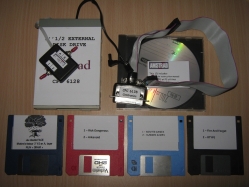
Foto review of 3½ Floppy adapter:
Thanks to B.C for the Floppy adapter.
source: ebay retro-zone.org amstrad hack page

Foto review of 3½ Floppy adapter:
Thanks to B.C for the Floppy adapter.
source: ebay retro-zone.org amstrad hack page
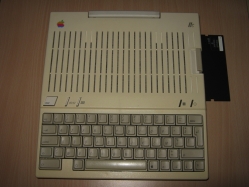
Autopsy:
from Wikipedia:
The Apple IIc, the fourth model in the Apple II series of personal computers, was Apple Computer’s first endeavor to produce a portable computer.
The end result was a luggable 7½ pound notebook-sized version of the Apple II that could easily be transported from place to place. The c in the name stood for compact, referring to the fact it was essentially a complete Apple II computer setup (minus display and power supply) squeezed into a small notebook sized housing.
While sporting a built-in floppy drive and new rear peripheral expansion ports integrated onto the main logic board, it lacked the internal expansion slots and direct motherboard access of earlier Apple IIs, making it a closed system like the Macintosh. However that was the intended direction for this model—a more appliance-like machine, ready to use out of the box, requiring no technical know-how or experience to hook up and therefore attractive to first-time users.
Useful links: Serial Cable Pinout & Apple Disk Transfer ProDOS – Apple 2c FAQ – Apple DOS 3.3 Dump – DOS Serial Transfer
source: wikipedia
I have found some ZZap 64 Magazine (Italian edition) in my attic.
from Wikipedia:
Zzap!64 was a computer games magazine covering games on the Commodore International series of computers, especially the Commodore 64 (C64). It was published in the UK by Newsfield Publications Ltd and later by Europress Impact.
The magazine launched in April, with the cover date May 1985, as the sister magazine to CRASH. It focused on the C64 for much of its shelf life, but later incorporated Amiga game news and reviews. Like CRASH for the ZX Spectrum, it had a dedicated cult following amongst C64 owners and was well known for its irreverent sense of humour as well as its extensive, detailed coverage of the C64 scene.
The magazine adopted an innovative review system that involved the use of the reviewers’ faces, artistically rendered by in-house artists Oli Frey and Mark Kendrick, to express their reaction to the games. These eventually evolved into static cartoons as the magazine began catering for a younger market.
By 1992, the magazine had changed so dramatically in design and editorial direction that then-publisher Europress decided to relaunch the magazine. Thus, issue 91 of Zzap!64 became issue 1 of Commodore Force, a magazine that itself lasted until March 1994.
source: wikipedia zzap64.co.uk
My homebrew Powersupply adaptor & RGB/Audio Scart cable for Amstrad CPC 464/6128.
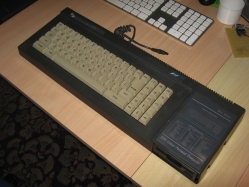
Autopsy:
from Wikipedia:
The Amstrad CPC (short for ‘Colour Personal Computer’) is a series of 8 bit home computers produced by Amstrad between 1984 and 1990. It was designed to compete in the mid-1980s home computer market dominated by the Commodore 64 and the Sinclair ZX Spectrum, where it successfully established itself, especially in the United Kingdom, France, Spain, and the German-speaking parts of Europe.
The series spawned a total of six distinct models: The CPC464, CPC664, and CPC6128 were highly successful competitors in the home computer market. The later plus models, 464plus and 6128plus, efforts to prolong the system’s lifecycle with hardware updates, were considerably less successful, as was the attempt to repackage the 464plus hardware into a game console as the GX4000.
The CPC models’ hardware was based on the Zilog Z80A CPU, complemented with either 64 or 128 kilobytes of memory. Their computer-in-a-keyboard design prominently featured an integrated data drive (compact cassette or 3″ floppy disk). The main units were only sold bundled with a color or monochrome monitor that doubled as the main unit’s power supply. Additionally, a wide range of first- and third-party hardware extensions such as disk drives (for the CPC464), printers, and memory extensions, was available.
The CPC series was pitched against other home computers primarily used to play video games and enjoyed a strong supply of first-party (Amsoft) and third-party game software. The comparatively low price for a complete computer system with dedicated monitor, its high resolution monochrome text and graphic capabilities and the possibility to run CP/M software also rendered the system attractive for business users, which was reflected by a wide selection of application software.
During its lifetime, the CPC series sold approximately 3 million units.
source: wikipedia cpcwiki.eu
Thanks to My Brother for the Photo.
Cartridges (also known as expansion modules) are freely exchangeable ROM libraries that provide additional content without providing additional functionality. These cartridges are plugged into a slot near the battery compartment in order to introduce new software libraries.
Word and game lists are of differing lengths depending upon the cartridge and the word lists in models marketed for different languages reflect the language marketed for. Separate word lists also exist for regional variants such as the American and British English versions.
The word list used in each of the regional models reflects the recommendations of educators in each country. The English, French, German and Italian versions were all created by a team of non-specialists, in TI’s plant near Antibes, France, under the watchful eye of Larry Brantingham who had patented the underlying technology.
source: wikipedia speaknspell.co.uk
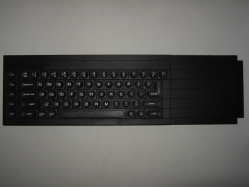
Autopsy:
from Wikipedia:
The Sinclair QL (for Quantum Leap), was a personal computer launched by Sinclair Research in 1984, as the successor to the Sinclair ZX Spectrum. The QL was aimed at the hobbyist and small business markets, but failed to achieve commercial success.
The QL was originally conceived in 1981 under the code-name ZX83, as a portable computer for business users, with a built-in ultra-thin flat-screen CRT display (similar to the later TV80 pocket TV), printer and modem. As development progressed, and ZX83 became ZX84, it eventually became clear that the portability features were over-ambitious and the specification was reduced to a conventional desktop configuration.
Based on a Motorola 68008 processor clocked at 7.5 MHz, the QL included 128 KB of RAM (officially expandable to 640 KB) and could be connected to a monitor or TV for display. Two built-in Microdrive tape-loop cartridge drives (first seen as a peripheral for the Sinclair ZX Spectrum) provided mass storage, in place of the more expensive floppy disk drives found on similar systems of the era.
Interfaces included an expansion slot, ROM cartridge socket, dual RS-232 ports, proprietary QLAN local area network ports, dual joystick ports and an external Microdrive bus. Two video modes were available, 256×256 pixels with 8 RGB colours and per-pixel flashing, or 512×256 pixels with four colours (black, red, green and white). Both screen modes used a 32 KB framebuffer in main memory.
The hardware was capable of switching between two different areas of memory for the framebuffer, thus allowing double buffering. However, this would have used 64 KB of the standard machine’s 128 KB of RAM and there is no support for this feature in the QL’s original firmware. The alternative and much improved operating system Minerva does provide full support for the second framebuffer.
source: wikipedia
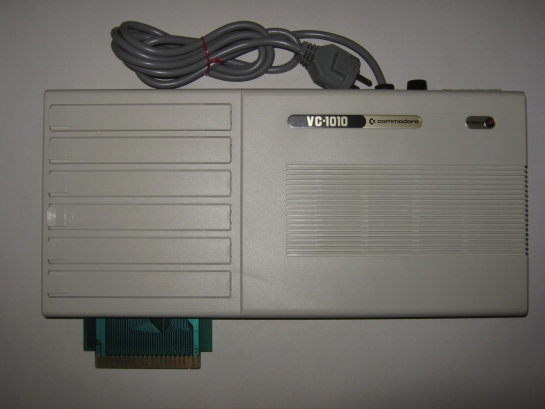
Autopsy:
from Bo Zimmerman Homepage:
The VIC-1010 is an optional expansion to the VIC-20 manufactured by Commodore UK. It plugs into the VIC-20′s game/expansion/bus port, providing 6 more such ports along the top.
The rest of the unit sits behind and a bit off to the right of the machine, preventing any obstruction of the VIC’s other ports. Built into the 1010 is a 220V power supply to supplement the computer’s supply.
source: zimmers.net
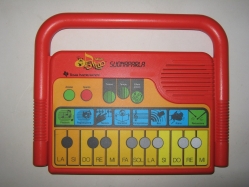
Autopsy:
from Datamath:
This funny synthesizer based product from Texas Instruments generates a lot of different sounds and stores them into internal memory. Compared with earlier products of the Speak & line this one uses a quite simple technology.
This educational toy is very similar to the Speak & Music but uses an Italian speaking language.
source: datamath.org
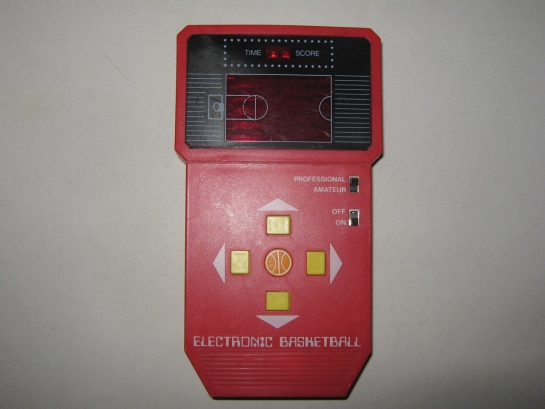
Autopsy:
Description:
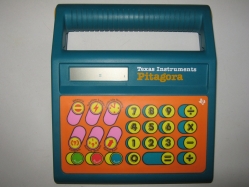
Autopsy:
from Datamath:
This educational toy for youngsters replaced the Math Marvel. The Math Star is preprogrammed to teach the basic four mathematic functions through different games. This educational toy was rated by Texas Instruments for childrens aged between 6 and 11 years.
The Math Star shared the housing with the Spelling B teaching word games. In the United Kingdom the game was sold as Maths Star, in Germany as Mathe-Star, in Italian it was labelled Pitagora and France knows the Les Nombres Magiques.
source: datamath.org
Recent Comments